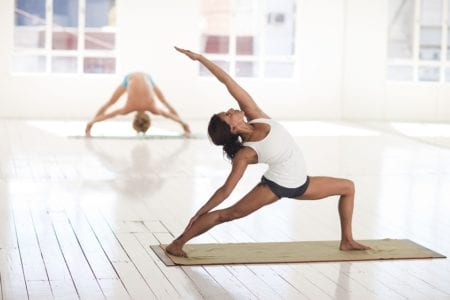 Can yoga effectively eliminate stress? What effects in combating stress can be achieved with yoga?
Can yoga effectively eliminate stress? What effects in combating stress can be achieved with yoga?
Biochemical processes occurring in the brain in a stressful situation differ depending on the sex. According to the researchers, the female brain is more sensitive to the stress hormone. Culturally also included in the role of women multitasking does not facilitate difficult task, which is the maximum leveling of stress in everyday life. Researchers also confirm that women are naturally more sensitive to threats in their environment, because they subconsciously want to defend their loved ones.
How does stress affect the body?
Stress disrupts cardiovascular and heart function. Increased blood pressure destroys the arteries, which eventually can lead to the closure of their light and further to heart attack or stroke. Stress also affects our muscles, cortisol – called the stress hormone – consumes muscle protein, which leads to muscle tension. The lymphatic system is also weakening – in the situation of increased production of cortisol in the blood, cytokine production is limited, which ultimately results in a general weakening of the body. Another adverse effect of stress are neck and back pains.
The most severe effect of stress in the context of the breath is its shallowing and acceleration, which in the long term may result in hypoxia, especially during sleep, and thus fatigue, irritability and problems with concentration.
According to researchers from the University of California, even short-term stress interferes with the brain, negatively affecting the function of learning new things and remembering. Long-lasting tension also results in problems with expressing, logical thinking, concentration and control of emotions.
We can talk about an effective fight against stress only in the case of counteracting it in those areas where it affects our body and body. The formula of movement, breathing, relaxation is a proven method of practicing yoga to fight the inseparable companion of everyday life, which is stress.
Movement by placing the body in several positions that mobilize the immune system and stimulates the endocrine system, strengthen the body and relax the tension. After loosening the body, we can go to relax the breath. The free flow of breath is a key element to achieve complete relaxation. Only the relaxation of the body and the freeing of the flow of breath give the possibility of entering a state of deep relaxation.
The body and mind are closely related. Properly performing individual yoga positions, which releases tensions (and not generating more), brings peace.
The measure of this calmness is a very sensitive measuring instrument – our breath. If there is peace in the head – the body begins to “let go”.
Yoga practice in the movement-breath formula, relaxation requires a very good knowledge of position, precision and experience. Remember that each of these elements is interrelated, and this type of exercise should always be performed after consulting a qualified yoga teacher.
Yoga positions that help fight stress
Relaxation not only stimulates creativity, but also contributes to lowering blood pressure, slowing breathing, reducing stress hormones, relaxing muscles and regenerating the nervous system.
Halasana, called the plow position, is one of the most relaxing gravity positions. The trick is to fit the body so that its weight rests on shoulders, not on the neck or head. When correctly positioned, the body is completely passive. It is important to properly support the shoulders so as to respect the anatomical range of the neck bend. The position is dedicated especially to overworked and tired people. Perfectly relaxes the lower back, regenerates the internal organs of the abdominal cavity, brings calmness and calming. The duration of the exercise should oscillate between 5-20 minutes.
Yoga – exercise for a headache
One of the most common effects of stress are headaches and migraine. As it turns out, one of the yogic positions – sit down with your head supported – can effectively help us in the fight against these ailments.
The basic tips when doing this position are: sitting on the right support height, straightening the spine and loosening the neck, shoulders, arms and stomach. It is important that the forehead and the point between the eyes are supported. Properly positioned position releases tension from the shoulders of the neck, relaxes the abdomen and lower back, calms down and calms. You can sit in it for a long time, changing the intersection of legs.
Where to practice yoga
You can practice yoga in yoga schools, in fitness clubs, where such activities are conducted or during holiday trips. Combining holiday with yoga practice is a guarantee of body and mind regeneration. More and more people take advantage of this opportunity by choosing a yoga vacation.
Practicing yoga also allows you to reduce spine pains, which one of the reasons may be just chronic stress. Researchers also confirm that the movement inhibits the release of cortisol and releases endorphins, called the hormones of happiness.
Picture Credit: AndiP
